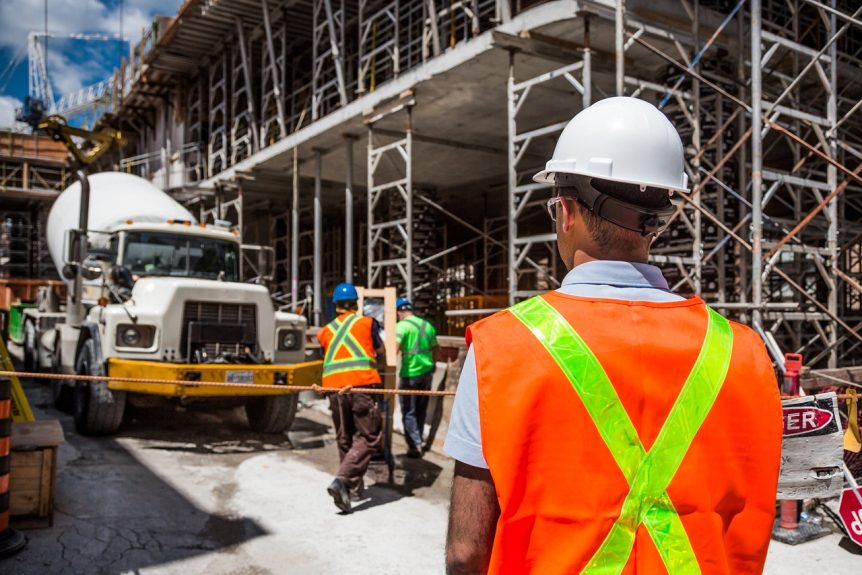When the seasons change, so do workers’ conditions, especially those using scaffolds and ladders. The weather can significantly impact the safety on these structures, making it crucial to follow specific seasonal guidelines to ensure everyone’s well-being.
Below, find essential tips for securing and preparing scaffolds and ladders as weather conditions fluctuate, along with vital legal advice for those in Geneva, Auburn, Ithaca, and Penn Yan, New York.
Weather Woes: Adapting Safety Practices
Spring Showers and Wind
Rain can make scaffolds and ladders slippery, and wind can destabilize them. To counter these elements:
- Ensure all surfaces are dry and clean before use.
- Secure ladders at the top and bottom to prevent movement.
- Use scaffold covers that protect against light rain and provide wind shielding.
Summer Heat
High temperatures can lead to heat exhaustion and affect worker concentration, increasing the risk of falls.
- Schedule work during cooler parts of the day.
- Ensure that workers stay hydrated and take frequent breaks in shaded areas.
- Check metal ladders and scaffolds as they can become hot and cause burns.
Autumn Leaves and Dampness
Falling leaves can accumulate on surfaces, creating slip hazards, and cooler temperatures bring morning dew.
- Regularly clear leaves and debris from scaffolds and ladders.
- Apply non-slip coatings where possible to enhance grip.
- Check for early signs of ice formation as temperatures begin to drop.
Winter Snow and Ice
Ice and snow can significantly compromise the safety and utilization of scaffolds and ladders, posing serious personal injury risks.
- Remove snow and ice before using any scaffold or ladder.
- Avoid using metal ladders in freezing temperatures as they can conduct cold, increasing the risk of slips.
- Consider using thermal covers or heated scaffold decks where applicable.
Legal Perspective: Protecting Your Rights
Despite taking all precautions, accidents can still occur.
If you or someone you know suffers a fall from a scaffold or ladder, it’s crucial to understand the legal steps to take. Worker’s compensation lawyers serving Geneva, Auburn, Ithaca, and Penn Yan, New York, can provide the necessary support and guidance to navigate the complexities of worker compensation law.
If an accident happens:
- Seek immediate medical attention.
- Report the incident to your employer or supervisor.
- Document the scene and your injuries.
- Contact a skilled worker compensation attorney.
Conclusion and Call to Action
As seasons change, so should your approach to scaffold and ladder safety. Being mindful of how different weather conditions affect these tools can be the key to preventing workplace accidents. If an unfortunate incident does occur, remember you are not alone. Worker compensation law firms specialize in defending your rights and ensuring you receive the compensation you deserve.
If you need legal assistance after a scaffold or ladder-related accident, don’t hesitate to contact the experienced worker compensation attorneys at Central NY Law. Our dedicated team is here to help you secure the compensation and support you need to recover and return to work. Remember, a quick response can be critical—reach out today to discuss your case and explore your options.
FAQ
What are the key safety checks for scaffolds before use in rainy conditions?
Ensure that all scaffold surfaces are dry and free from mud or oil. Check that non-slip mats are in place, and inspect structural integrity to handle additional weight from water.
How can workers prevent ladder slips during windy weather?
Secure ladders at both the top and bottom to prevent shifting. Choose a sheltered location if possible, and avoid using ladders in high winds that exceed safety guidelines.
What are the signs of heat exhaustion to watch for when working on scaffolds in the summer?
Look for symptoms such as heavy sweating, weakness, dizziness, nausea, clammy skin, and fainting. Workers experiencing these should stop work, move to a cooler place, and hydrate immediately.
Why is clearing leaves from ladders and scaffolds important in the fall?
Leaves can create a slip hazard when they accumulate on surfaces. Wet or decomposing leaves can be particularly slippery, making it essential to keep working surfaces clean.
How do temperature changes affect metal ladders?
Metal ladders can become very hot or very cold, depending on the weather, which can lead to burns in summer or a higher slip risk in cold conditions due to icy surfaces.
What are the best practices for using scaffolds in snowy conditions?
Before use, clear all snow and ice from the scaffold. Apply anti-slip material on walking surfaces. Ensure that the scaffold is stable and has no icy build-up that could compromise its structure.
Can ice form on scaffolds and ladders, and how can it be safely removed?
Yes, ice can form on scaffolds and ladders. It should be carefully removed using de-icing products or by manually scraping it off before the start of work to ensure safety.
What should a worker do immediately after falling from a scaffold or ladder?
Seek medical attention, regardless of perceived injury severity. Report the incident to a supervisor, and ensure an accident report is filed. Document the scene and any factors that might have contributed to the fall.
How can worker compensation attorneys assist after a scaffold or ladder fall accident?
Worker compensation attorneys can help navigate the claims process, ensuring that all legal rights are protected. They can assist in securing compensation for medical expenses, lost wages, and other damages.
Where can Geneva, Auburn, Ithaca, and Penn Yan workers find legal help for fall-related injuries
Workers in these areas can seek legal assistance from local worker compensation law firms specializing in personal injury and workplace accidents to ensure they receive expert advice and representation.
